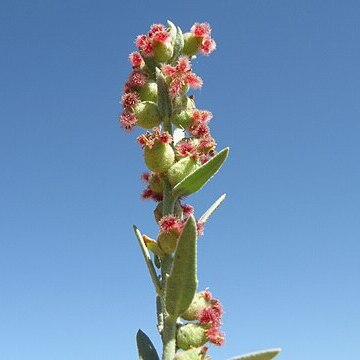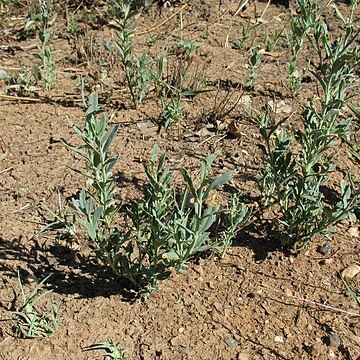Perennial herb 18–25 cm high, with underground stolons. Stems annual, smooth, with uncinate hairs. Leaves alternate, sessile, lanceolate to narrowly ovate, scabrous; lamina 20–40 mm long; margins thickened, entire or coarsely dentate. Inflorescence of 3–5-flowered dichasia; occasional lateral inflorescences in upper leaf axils; bracts lanceolate to narrowly ovate, 10–17 mm long, entire or serrate, green; bracteoles linear, 1.2–1.4 mm long, entire, brown to white. Flowers 4-merous; pedicel 0.1–0.2 mm long. Sepals deltoid, 1.5–1.7 mm long. Petals 2.1–3 mm long, green to red. Stamens 8. Ovary 4-locular, smooth, scabrous; styles 4. Fruit 1–3 per axil, globular to pyriform or ovoid, 2.5–3 mm long and wide, weakly 4–8-ribbed in upper half, verrucose in lower half, glabrous or scabrous.


